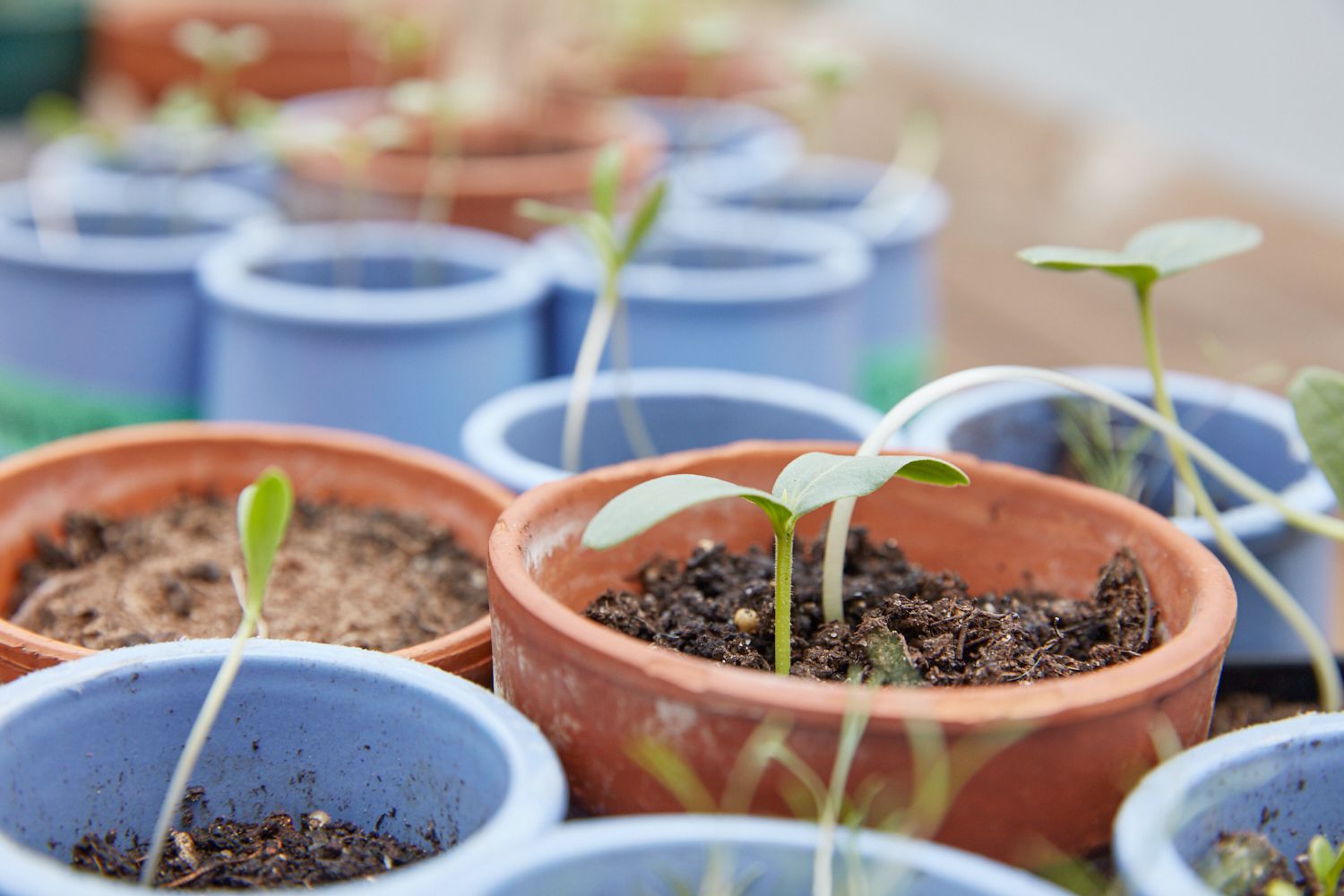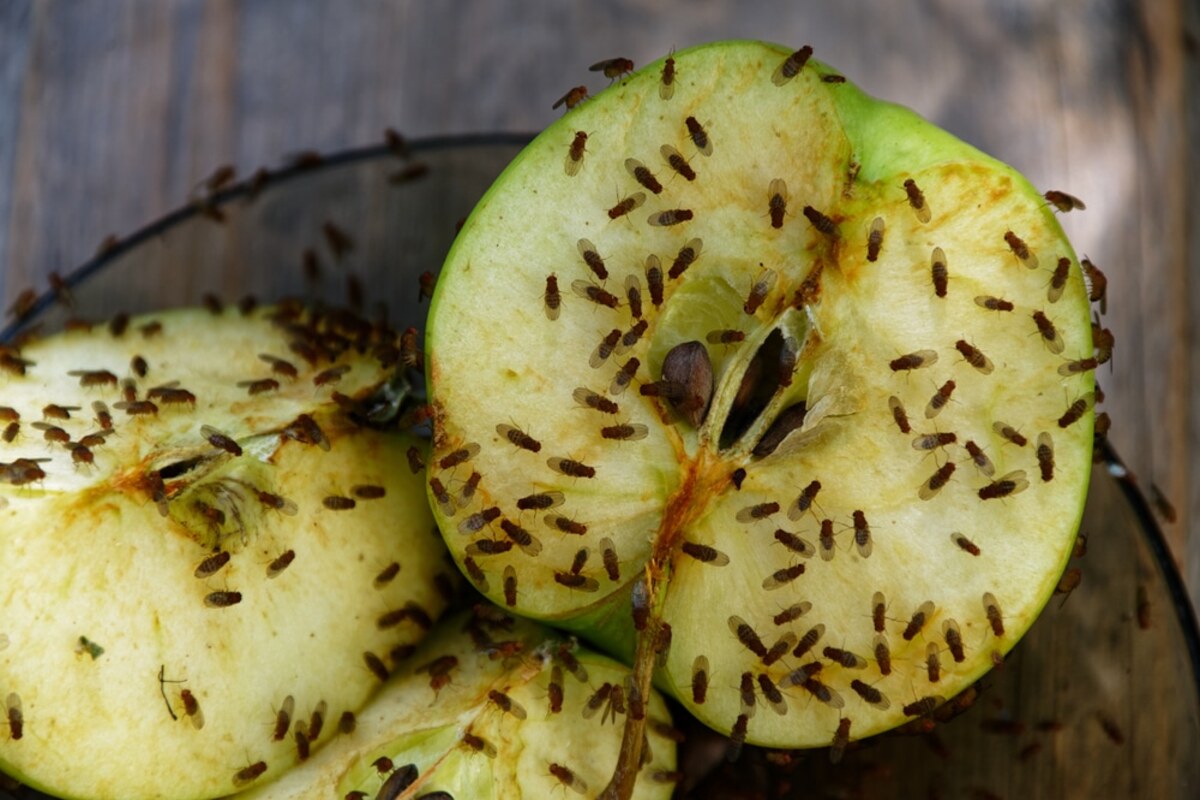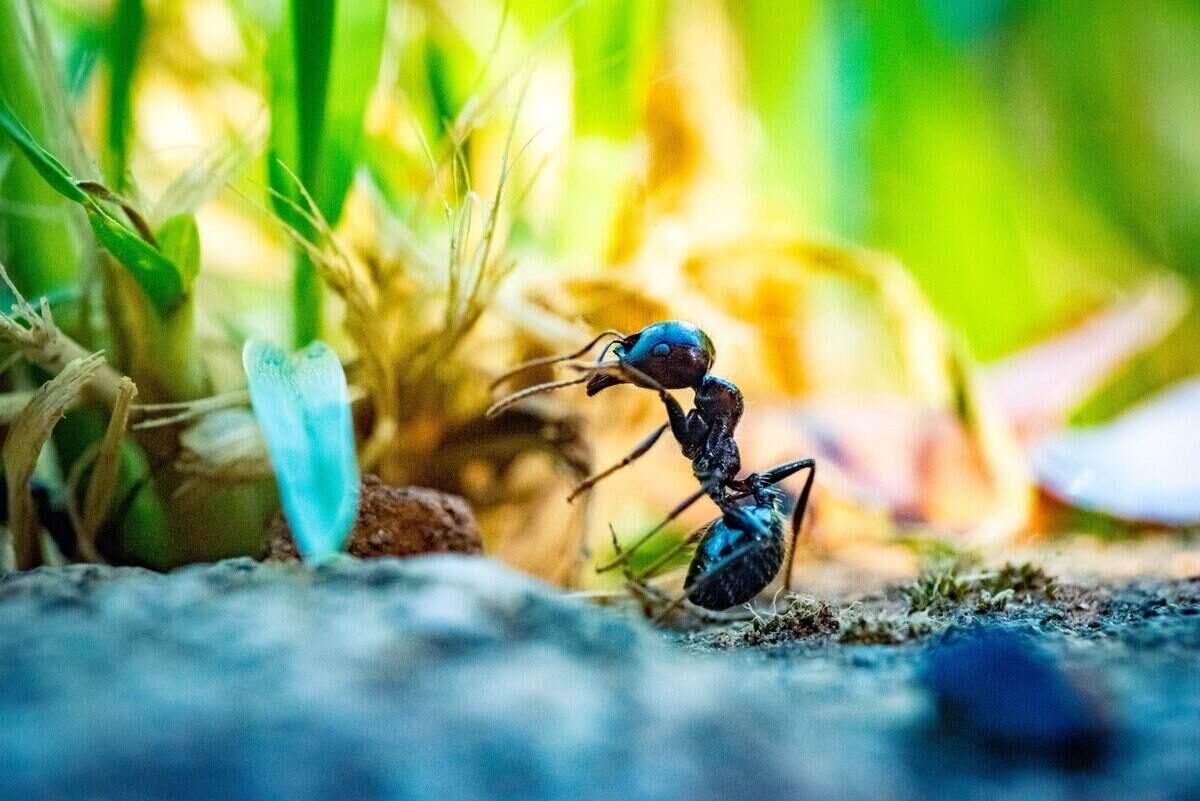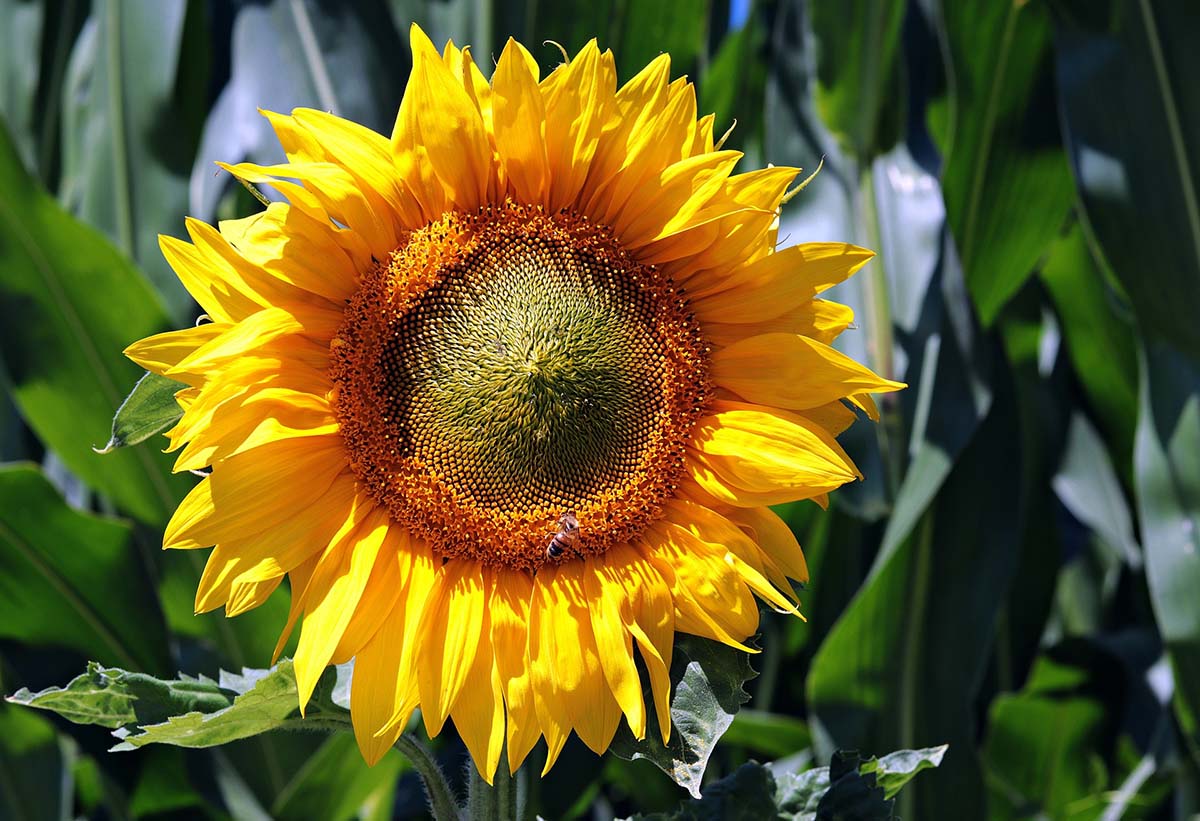Home>Gardening Tips and Tricks>Problem Solving>How To Get Rid Of White Fuzzy Mold On Seedlings


Problem Solving
How To Get Rid Of White Fuzzy Mold On Seedlings
Published: January 6, 2024
Learn effective problem-solving techniques to eliminate white fuzzy mold on seedlings. Discover expert tips for preventing and managing mold growth in your garden.
(Many of the links in this article redirect to a specific reviewed product. Your purchase of these products through affiliate links helps to generate commission for Chicagolandgardening.com, at no extra cost. Learn more)
Table of Contents
**
Introduction
**
Are you a gardening enthusiast who has encountered the frustrating sight of white fuzzy mold on your precious seedlings? If so, you're not alone. This common issue can be a source of distress for many gardeners, but fear not, as there are effective ways to combat this pesky problem. In this comprehensive guide, we will delve into the world of white fuzzy mold on seedlings, exploring its causes, prevention, and treatment. By the end of this article, you will be equipped with the knowledge and strategies needed to banish white fuzzy mold from your seedlings and nurture a thriving garden.
Whether you're a seasoned gardener or a novice with a green thumb, the presence of white fuzzy mold can be disheartening. However, with the right approach, you can overcome this challenge and ensure the health and vitality of your seedlings. Join us as we embark on a journey to understand, prevent, and eradicate the menace of white fuzzy mold, empowering you to cultivate a flourishing garden that brings joy and satisfaction.
Let's dive into the intricacies of this common issue and discover the best practices for maintaining mold-free, vibrant seedlings.
Understanding White Fuzzy Mold on Seedlings
Before we can effectively combat white fuzzy mold on seedlings, it’s crucial to grasp the nature of this nuisance. The presence of white fuzzy mold, also known as powdery mildew, is often indicative of high humidity and poor air circulation. This fungal growth can thrive in environments where moisture lingers, making seedlings particularly susceptible due to their tender nature.
White fuzzy mold typically appears as powdery white spots on the leaves and stems of seedlings, gradually spreading if left unchecked. While it may start as a seemingly harmless blemish, this mold has the potential to impede the growth and overall health of your seedlings if not addressed promptly.
Furthermore, powdery mildew can hinder photosynthesis, weakening the affected plants and diminishing their ability to thrive. In addition to its detrimental impact on growth, the unsightly appearance of white fuzzy mold can detract from the visual appeal of your garden, posing a challenge to the aesthetic harmony you strive to achieve.
Understanding the conditions that foster the growth of white fuzzy mold is essential for implementing effective preventive measures. By recognizing the factors that contribute to its development, such as excessive moisture and inadequate ventilation, you can take proactive steps to create an inhospitable environment for this troublesome fungus.
As we delve deeper into the prevention and treatment of white fuzzy mold on seedlings, keep in mind the significance of comprehending its characteristics and the environmental conditions that facilitate its proliferation. Armed with this knowledge, you’ll be better equipped to safeguard your seedlings from the encroachment of powdery mildew and nurture a thriving garden.
Prevention of White Fuzzy Mold on Seedlings
Preventing the onset of white fuzzy mold on seedlings necessitates a proactive approach centered on creating an environment that discourages fungal growth. One of the fundamental strategies for preventing this menace is to prioritize proper air circulation. Adequate airflow around your seedlings can significantly reduce the likelihood of powdery mildew taking hold.
Strategic spacing of seedlings, ensuring they are not overcrowded, can facilitate better air circulation and minimize the buildup of moisture, thereby mitigating the conditions favorable to white fuzzy mold. Additionally, positioning your seedlings in an area with ample natural light can contribute to a less hospitable environment for fungal proliferation.
Furthermore, maintaining optimal humidity levels is pivotal in thwarting the development of white fuzzy mold. While it’s essential to water your seedlings appropriately, it’s equally crucial to avoid overwatering, as excessive moisture can create a breeding ground for powdery mildew. Employing a watering method that targets the soil rather than wetting the foliage can help minimize the risk of fungal infestation.
Another preventive measure involves diligent inspection of new plants before introducing them to your garden. By carefully examining any new additions for signs of white fuzzy mold or other potential threats, you can preemptively address any issues and safeguard your existing seedlings from contamination.
Implementing cultural practices that promote overall plant health, such as proper fertilization and soil management, can fortify your seedlings’ resilience against fungal attacks. Choosing disease-resistant varieties when possible can also bolster your garden’s defenses and reduce the susceptibility of your plants to powdery mildew.
By integrating these preventive measures into your gardening routine, you can create an environment that discourages the proliferation of white fuzzy mold, empowering your seedlings to flourish free from the encumbrance of this pesky fungus.
Treatment of White Fuzzy Mold on Seedlings
Addressing the presence of white fuzzy mold on seedlings demands prompt and targeted intervention to mitigate its impact and restore the health of your plants. One effective treatment involves the use of a homemade remedy comprising a solution of water and baking soda. This natural fungicide can be applied to the affected seedlings, serving to combat the spread of powdery mildew.
Furthermore, neem oil, renowned for its pesticidal and antifungal properties, can be utilized as a potent tool in the battle against white fuzzy mold. Diluting neem oil with water and applying it to the affected areas can help arrest the growth of powdery mildew and prevent its recurrence.
Pruning affected leaves and stems is another vital aspect of treatment, as it not only removes the visible mold but also enhances airflow around the plants, creating an environment less conducive to fungal development. It’s essential to exercise care and precision when pruning, ensuring that the affected parts are removed without causing undue stress to the seedlings.
Integrating organic, compost-based fertilizers can bolster the overall health and resilience of your seedlings, enabling them to combat the impact of white fuzzy mold more effectively. Additionally, ensuring that the surrounding area is kept clean and free of debris can contribute to minimizing the risk of fungal recurrence.
Consideration should also be given to the environmental conditions in which the affected seedlings are situated. Adjusting factors such as humidity and airflow, as well as relocating seedlings to an area with improved light exposure, can aid in impeding the progression of powdery mildew.
Finally, it’s imperative to monitor the treated seedlings closely, observing for any signs of recurring mold and adjusting your treatment approach as necessary. By remaining vigilant and proactive, you can combat white fuzzy mold effectively and nurture your seedlings back to robust health.
Conclusion
As we conclude our exploration of white fuzzy mold on seedlings, it’s evident that proactive prevention and targeted treatment are pivotal in safeguarding the health and vitality of your plants. By understanding the environmental conditions conducive to powdery mildew and implementing measures to counteract them, you can create an inhospitable environment for fungal growth, fostering the flourishing growth of your seedlings.
Remember, proper air circulation, optimal humidity levels, and vigilant plant care are essential components of a comprehensive approach to preventing and addressing white fuzzy mold. By incorporating these strategies into your gardening routine, you can fortify your seedlings against the encroachment of this troublesome fungus.
Furthermore, the utilization of natural remedies, such as baking soda solutions and neem oil, coupled with meticulous pruning and diligent monitoring, can effectively combat the presence of white fuzzy mold on your seedlings. These targeted treatments, when applied with care and consistency, can mitigate the impact of powdery mildew and restore your plants to robust health.
As you embark on your gardening journey, armed with the knowledge and strategies elucidated in this guide, approach the challenge of white fuzzy mold with confidence and determination. By nurturing your seedlings in an environment that prioritizes their well-being and resilience, you can cultivate a garden that flourishes free from the constraints of powdery mildew.
Embrace the role of a vigilant caretaker, attuned to the needs of your plants and responsive to signs of distress. With a proactive mindset and a commitment to plant health, you can overcome the threat of white fuzzy mold and revel in the beauty and abundance of a thriving garden.
May your gardening endeavors be marked by resilience, creativity, and the joy of nurturing life from seedling to fruition.








